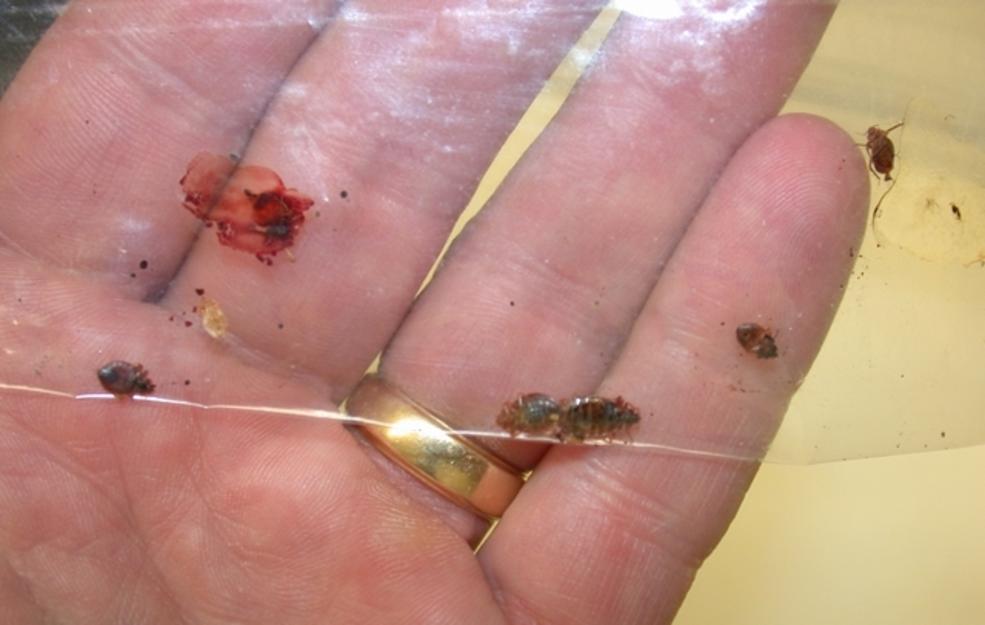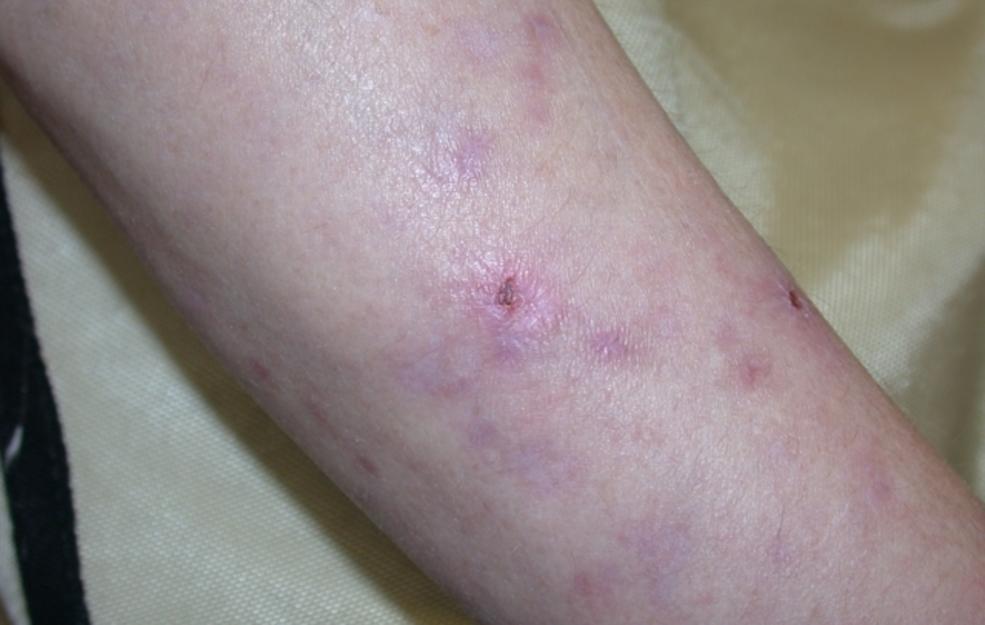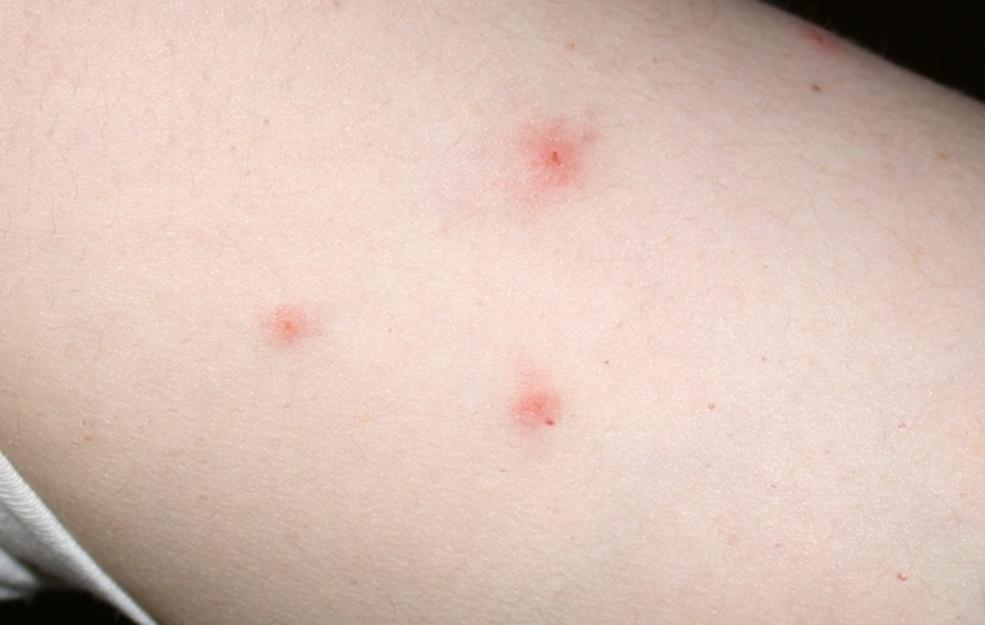How to Get Rid of Bedbugs Fast

There are various forms of living organisms found in our environment and surroundings. Some of these organisms rarely cause us any harm. However, some of them could become a nuisance and cause various forms of allergies and other infections in the human body. Bedbugs are just one of those bothersome microorganisms.
Bedbugs are very small in size, have an oval shape, and are brown-colored. Moreover, they feed on the blood of both animals and human beings. The bodies of adult bedbugs are flat in shape, almost having the same size of an apple seed. However, just after a feed, their bodies tend to swell up changing their color from brownish to reddish.
Bedbugs are not capable of flying. However, they can certainly move fast on the floor, walls, and even ceilings. The female bedbugs are capable of laying hundreds of eggs, all of which are extremely tiny to see.
Immature or young bedbugs are known as nymphs. They tend to shed their skin approximately five times before they reach their stage of maturity. Each time before the shedding of their skin, they require feeding on blood. When the conditions are just right, a bedbug could develop within a short span of time like almost a month. In a year, a bedbug has the capacity to multiply and produce a minimum of three generations. Although the presence of bedbugs can be extremely annoying and can cause certain skin rashes, they do not transmit any major diseases.
Where do bedbugs hide?
Bedbugs could make their way inside your house in numerous ways. They could be hiding in your luggage, clothes, beds, mattresses, and couches, among others. Because of their body structure, it is rather easy for them to fit inside the tiniest of spaces. Bedbugs do not live in colonies and make houses like the ants. However, they do have certain hiding spaces where they can hide in groups. They primarily hide inside mattresses, bed frames, and around the beds, so that it would be easier for them to bite people at nighttime.
However, after some time, they also find other spaces around the room to hide. They usually hide within the bedroom area, moving to narrow openings where they can keep themselves protected. They also have a tendency to spread from one room to another and to other houses.
Having bedbugs in your house is not a sign of untidiness since they are only thriving on blood. They can also be found in squeaky clean rooms as well. Moreover, you can't get rid of them by only inspecting your bed and room since they are too tiny and can hide under the smallest corners and areas in your room.
When do bedbugs bite?
Bedbugs are primarily active looking for food at night. They usually bite and feast on the blood of people while they are fast asleep. They have a sharp and long beak, which helps them pierce a person's skin and suck blood. A bedbug is known to feed on a person in a span of about 3-10 minutes, and once it is full of the blood, it moves away without you feeling or sensing it.
Most of the time, bedbug bites initially do not cause any pain. However, their bite eventually causes itchiness just like the bites from mosquitoes and ants. Bedbugs do not bite at specific areas but could bite an area of any exposed skin when the person is asleep. The bite from a bedbug does not have a red center like in the case of other insect or mosquito bites.
Most people cannot see bedbugs and rule out bedbug attacks to be the cause of their itching and welts. They often think that the bites are caused by mosquitoes and other insects. To understand a bedbug infestation that may be prevalent in your house, you need to see and identify the bugs itself.
How to spot a bedbug infestation
If you suddenly experience itchiness and see a few welts on the itchy areas of your skin upon waking up, there is a high chance that you were bitten by a bedbug. Used linen, furniture, and bed springs could all be prospective spots for the bedbugs to hide.
Some of the other signs that could indicate a bedbug infestation include the following:
- Stains of blood on your beddings and pillowcases.
- Dark spots indicating the accumulated fecal matter of bedbugs that could be seen on bedsheets, mattresses, and even on the walls.
- Bedbug eggs and egg shells that appear as white, pale yellow, or beige spots and their excrement appearing as dark spots found in places where they hide, even in the deepest corners
- A strange moldy odor that is normally secreted by the bedbugs' glands
If you notice any of the signs above, it is highly recommended that you immediately remove all your beddings and look for the signs of any bugs and their fecal matter. Thoroughly check the entire bed and do not miss out the areas under the bed, the bottom of the bed, and the headboard. Manage to frequently change your bed covers and pillowcases.
You should also check out the areas around your bed such as old books, phones, radios and other things inside your room. Moreover, bedbugs often hide in thick carpets and sometimes even in electric boards and circuits. Keep cleaning your closet as frequently as possible since bedbugs can also attach themselves to the furniture and can slowly creep into your clothes. If in case you suspect a bedbug infestation in your home, but not quite sure about it, you should call a pest control agency to help identify the problem. They would ideally know the right signs and help you eliminate the bedbugs from your living spaces.
How to get rid of bedbugs
To completely get rid of the bedbugs, it is important to get your rooms frequently cleaned, which includes cleaning the innermost corners where the bedbugs normally live. Ideally, the cleaning process should include the following:
- Cleaning the beds as well as washing the linens, curtains, and couch covers using hot water with a disinfectant. If you can't dry your clothes under direct sunlight, you can use your dryer and dry them on high for half an hour. Wash stuffed toys periodically to keep them clean and free from a bedbug infestation. Other items such as shoes should be regularly cleaned including the shoe cabinet.
- Before running the vacuum machine, clean the mattresses and the headboards using a brush to remove the eggs that could be stuck on the fabric lining of the mattresses.
- To keep your bed and sleeping area free from dust and bugs, it is extremely important to vacuum regularly. After running the vacuum, make sure that you throw the contents in a sealed plastic bag and keep it outdoors.
- Use zippered covers that are tightly woven to seal the mattress and the box springs. This will protect the bugs from entering and from escaping. Remember that bedbugs could stay on without a feed up to a year. Thus, try changing your covers after a year to ensure that the bugs are all dead.
- Keep checking your walls for cracks, especially in wallpapers as these places are where bedbugs safely hide.
- Do not gather any clutter around the bed. Keep bookshelves and old books neat and clean with periodic cleaning. If possible, keep them away from the bed area.
- In case you find your mattress infested with bedbugs, you may have no choice but to get rid of it. However, before setting a new mattress, ensure that you carry out a deep cleaning in your house to make sure that the bedbugs are all gone or else they could infest the new mattress in no time.
- Get ample sunlight in your room as the sun's rays are the best way to kill not only bed bugs but also any harmful bacteria that could cause harm to your health.
Natural remedies to get rid of bedbugs
While the above measures are extremely useful to get rid of the bugs, there are also some natural insecticides that can be helpful in killing the bugs and their eggs even in places that are hard to reach.
Here are some of the most useful natural remedies that you can try to effectively get rid of bedbugs from your home:
1. Tea tree oil
A spray made of natural tea tree oil is an excellent remedy to naturally get rid of bedbugs from your sleeping space and your house. You can make this spray at home using natural tea tree oil or buy one from an organic store. The spray helps in cleaning areas that are hard to reach such as cracks, corners around the walls, and the joints of furniture, all of which are areas where the bedbugs can easily hide.
To make your own insecticide, dilute around 20 drops tea tree oil in a spray bottle and mix well. Spray liberally around the areas where you think the bedbugs are hiding. Use this spray until you are sure that the bedbugs have completely disappeared from your house. Every time before spraying, shake the bottle well as the oil will settle down leaving the water on top. This spray is far better than spraying chemical-laden insecticides, especially in homes where there are small children. Tea tree oil is also very soothing on the skin with bedbug bites.
2. Lavender oil
Just like the tea tree oil spray, lavender oil also has natural properties that will keep bedbugs at bay preventing their infestation in your home. Lavender oil contains natural insect repellent ingredients that can be highly toxic to insects but are completely safe for humans. It also safe when sprayed around at home with small kids.
Studies have shown the natural benefits of lavender oil when used in combination with peppermint oil to kill insects and bedbugs. Lavender oil is also highly effective in destroying bedbug eggs in the hidden corners of your home, thereby completely eradicating the possibility of a bedbug infestation in your house. Peppermint oil is also a strong natural oil that contains essential ingredients enough kill bedbugs.
To make your own lavender oil spray, add about 10-15 drops of lavender essential oil along with the same quantity of peppermint oil and dilute them with water. Transfer the contents to a spray bottle and mix well. Use this spray on the affected areas of your house until all the bedbugs are gone and you can see no further signs of the bugs at home.
3. Diatomaceous earth
Diatomaceous earth is a well-known natural insect killer. This powder has a unique property that causes dehydration in insects such as bedbugs. It kills insects by damaging their outer membrane. Since vacuuming is not a foolproof method of removing the bedbugs from their hideouts, diatomaceous earth is proven to be highly effective in controlling the infestation.
Although this product acts slow, it is highly beneficial as it completely kills the bugs and prevents them from coming back. For about 12 days, you can completely free your house from bedbugs using diatomaceous earth as well as control their recurrence.
To use diatomaceous earth for the extermination of bedbugs, use the powder and dust all over the suspected bedbug-infested areas. Continue doing this for two weeks to completely get rid of the bugs.


























